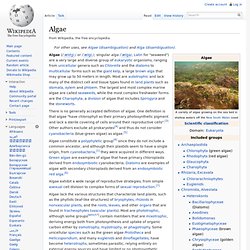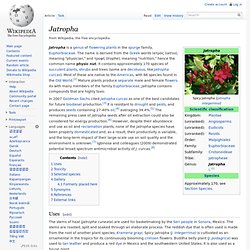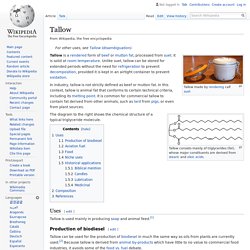

Canola - Wikipedia, the free encyclopedia - (Build 2010040106463. Canola refers to both an edible oil (also known as Canola oil) produced from the seed of any of several varieties of the rape plant, and to those plants, namely a cultivar of either rapeseed (Brassica napus L.) or field mustard/turnip rape (Brassica rapa subsp. oleifera, syn.

Brassica campestris L.). Consumption of the oil is common and does not cause harm in humans[1][dead link][2] and livestock.[3] It is also used as a source of biodiesel. Etymology[edit] The name "canola" was chosen by the board of the Rapeseed Association of Canada in the 1970s. The "Can" part stands for Canada and "ola" refers to oil.[5][6] However, a number of sources, including dictionaries, continue to claim that it stands for "Can(ada)+o(il)+l(ow)+a(cid). History[edit] Close up of rapeseed blooms Canola flower Canola was developed through conventional plant breeding from rapeseed, an oilseed plant already used in ancient civilization as a fuel. Algae - Wikipedia, the free encyclopedia - (Build 20100401064631. The lineage of algae according to Thomas Cavalier-Smith.

The exact number and placement of endosymbiotic events is currently unknown, so this diagram can be taken only as a general guide[1][2] It represents the most parsimonious way of explaining the three types of endosymbiotic origins of plastids. These types include the endosymbiotic events of cyanobacteria, red algae and green algae, leading to the hypothesis of the supergroups Archaeplastida, Chromalveolata and Cabozoa respectively. However, the monophyly of Cabozoa has been refuted and the monophylies of Archaeplastida and Chromalveolata are currently strongly challenged. [citation needed] Endosymbiotic events are noted by dotted lines. There is no generally accepted definition of algae. Algae constitute a polyphyletic group[4] since they do not include a common ancestor, and although their plastids seem to have a single origin, from cyanobacteria,[1] they were acquired in different ways.
Jatropha - Wikipedia, the free encyclopedia - (Build 20100401064. Jatropha is a genus of flowering plants in the spurge family, Euphorbiaceae.

The name is derived from the Greek words ἰατρός (iatros), meaning "physician," and τροφή (trophe), meaning "nutrition," hence the common name physic nut. It contains approximately 170 species of succulent plants, shrubs and trees (some are deciduous, like Jatropha curcas). Most of these are native to the Americas, with 66 species found in the Old World.[2] Mature plants produce separate male and female flowers. As with many members of the family Euphorbiaceae, Jatropha contains compounds that are highly toxic. Uses[edit] The stems of haat (Jatropha cuneata) are used for basketmaking by the Seri people in Sonora, Mexico. The oil from Jatropha curcas is mainly converted into biodiesel for use in diesel engines. Salicornia - Wikipedia, the free encyclopedia - (Build 201004010. Salicornia is a genus of succulent, halophyte (salt tolerant) plants that grow in salt marshes, on beaches, and among mangroves.

Salicornia species are native to North America, Europe, South Africa, and South Asia. Common names for the genus include glasswort, pickleweed, and marsh samphire; these common names are also used for some species not in Salicornia.[1] The main European species is often eaten, called marsh samphire in Britain, and the main North American species is occasionally sold in grocery stores or appears on restaurant menus, usually as 'sea beans'. Botanical[edit] The Salicornia species are small, usually less than 30 cm tall, succulent herbs with a jointed horizontal main stem and erect lateral branches. The leaves are small and scale-like, and as such, the plant may appear leafless. Salicornia species can generally tolerate immersion in salt water. Species[edit] salicornia Salicornia virginica Culinary[edit] Umari keerai is cooked and eaten or pickled.
Tallow - Wikipedia, the free encyclopedia - (Build 2010040106463. In industry, tallow is not strictly defined as beef or mutton fat.

In this context, tallow is animal fat that conforms to certain technical criteria, including its melting point. It is common for commercial tallow to contain fat derived from other animals, such as lard from pigs, or even from plant sources. Tallow consists mainly of triglycerides (fat), whose major constituents are derived from stearic and oleic acids. The diagram to the right shows the chemical structure of a typical triglyceride molecule. Uses[edit] Tallow is used mainly in producing soap and animal feed.[1] Production of biodiesel[edit] Tallow can be used for the production of biodiesel in much the same way as oils from plants are currently used.[2] Because tallow is derived from animal by-products which have little to no value to commercial food industries, it avoids some of the food vs. fuel debate.
Aviation fuel[edit]